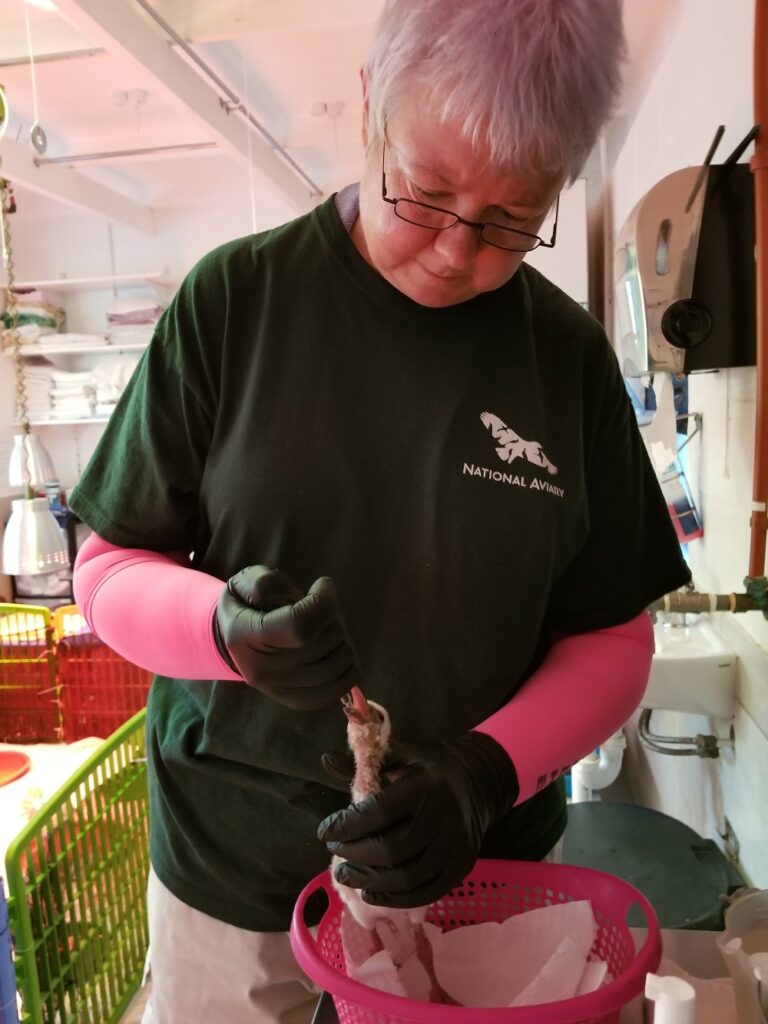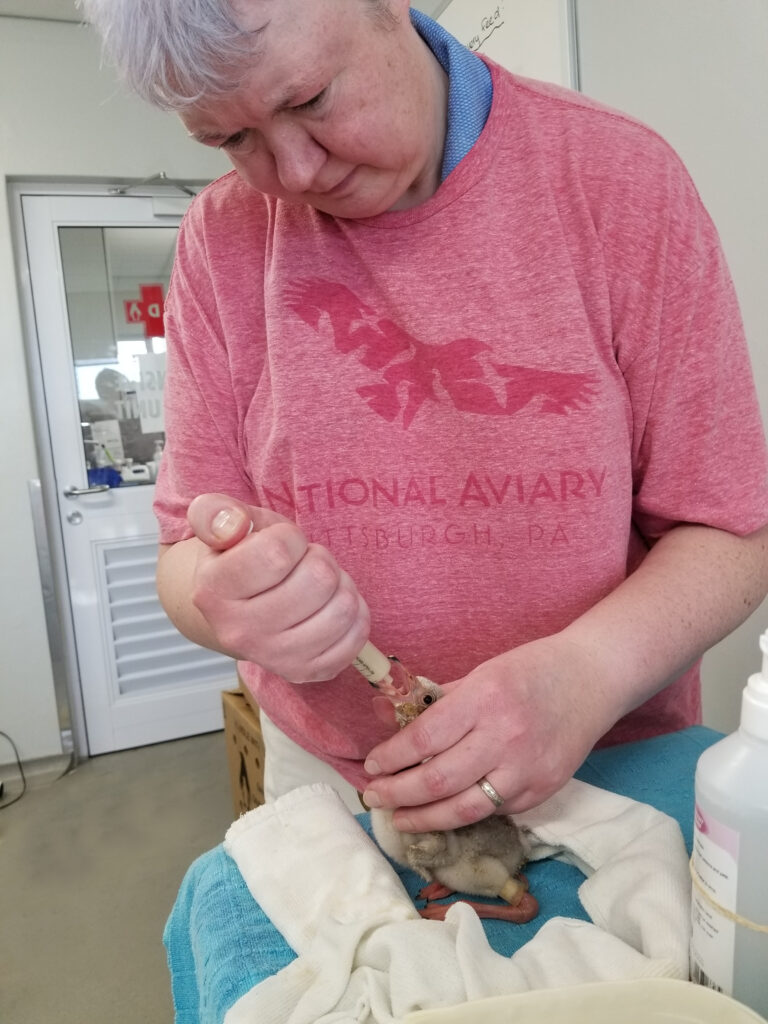A Flamingo Rescue Halfway Around the World
When more than 1,800 baby Lesser Flamingoes were abandoned by their parents due to a severe drought at the Kamfers Dam in South Africa in 2019, the National Aviary’s Teri Grendzinski was among the first to arrive on the scene. Teri Grendzinski made the journey to South Africa equipped with medication and veterinary supplies, arriving at the Southern African Foundation for the Conservation of Coastal Birds (SANCCOB), one of the rehabilitation locations that had taken in hundreds of chicks.
With more than 25 years of working with flamingos, and experience hand raising flamingos at the National Aviary, Teri was equipped for the task. She lent expertise and support to the emergency evacuation and rehabilitation effort to save the helpless chicks.


While at SANCCOB, Teri’s experience hand raising flamingo chicks and working with flamingos for over 25 years came in handy. “I trained many volunteers on feeding techniques for the baby flamingos, I helped to optimize the room temperatures for the chicks, and helped determine appropriate bathing pools so they were high enough to meet their natural bathing behavior needs but not so high that they couldn’t step in,” she said.
Watch Teri gently feed a Lesser Flamingo chick, 2019
Using these best practices learned over decades of the National Aviary’s work with flamingoes, Teri worked alongside SANCCOB staff and volunteers from around the world to raise as many health young birds as possible to be released back to viable flamingo colonies.
The task was daunting. Baby flamingoes are fragile. They have very specific care requirements—from temperature, to food volume, to food type, to exercise for their long legs. Some chicks needed intensive care.
Teri dove headfirst into the work, helping to prepare a special formula that was fed to the chicks every three hours. To help set the chicks up to be released back into the wild when they’re older, Teri wore pink compression stockings on her arms while hand-feeding them—the bright pink color looks similar to the neck of an adult flamingo.
Flamingoes have very long legs and need space to move so their legs can grow and develop properly. As the chicks grew, Teri and the team rearranged their workspace and set up large outdoor areas for them, using heat lamps to help the chicks stay comfortable when the weather got cold and windy.
With care and time, the chicks thrived, and many were able to be released back into the wild. Of the experience of caring for the chicks during this emergency situation, Teri said, “This experience was so many things for me. It was overwhelming, exciting, exhausting, fulfilling, and so much more. But above all, so rewarding.”
The rescue of these vulnerable flamingo chicks demonstrates the value of collaboration. “The team I worked with in South Africa is amazing. We all worked together, sharing our knowledge and experiences with each other, to provide the best possible care for the chicks,” Teri said. “I know that because of our individual and collective expertise and hard work, we gave the chicks the best possible chance.”
Visit American Flamingoes at the National Aviary in the Wetlands habitat!
